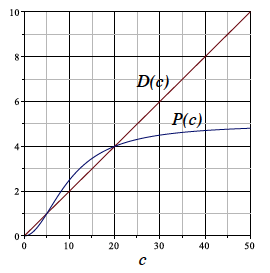Science:Math Exam Resources/Courses/MATH102/December 2014/Question C 02 (d)
{{#incat:MER QGQ flag|{{#incat:MER QGH flag|{{#incat:MER QGS flag|}}}}}}
• QA 1 • QA 2 • QA 3 • QA 4 • QA 5 • QA 6 • QA 7 • QA 8 • QB 1 • QB 2 • QB 3 • QB 4 • QB 5 • QB 6 • QB 7 • QC 1 • QC 2(a) • QC 2(b) • QC 2(c) • QC 2(d) • QC 3 •
|
Make sure you understand the problem fully: What is the question asking you to do? Are there specific conditions or constraints that you should take note of? How will you know if your answer is correct from your work only? Can you rephrase the question in your own words in a way that makes sense to you? |
|
If you are stuck, check the hints below. Read the first one and consider it for a while. Does it give you a new idea on how to approach the problem? If so, try it! If after a while you are still stuck, go for the next hint. |
Hint 1 |
|---|
|
How to solve the steady state? When does a quadratic equation have only one solution? |
Hint 2 |
|---|
|
In part a), we determine the value of the steady state by setting equals 0. |
Hint 3 |
|---|
|
The quadratic equation has one solution when |
|
Checking a solution serves two purposes: helping you if, after having used all the hints, you still are stuck on the problem; or if you have solved the problem and would like to check your work.
|
Solution |
|---|
|
Same as in C2(a), to solve the steady states, we just need to solve the following equation Obviously is one of the steady states and other steady states are roots of the quadratic equation To get only two steady state, from the quadratic formula we need to have and in this case Thus with the given values of and we have To obtain positive steady state , we get |
{{#incat:MER CT flag||
}}




















